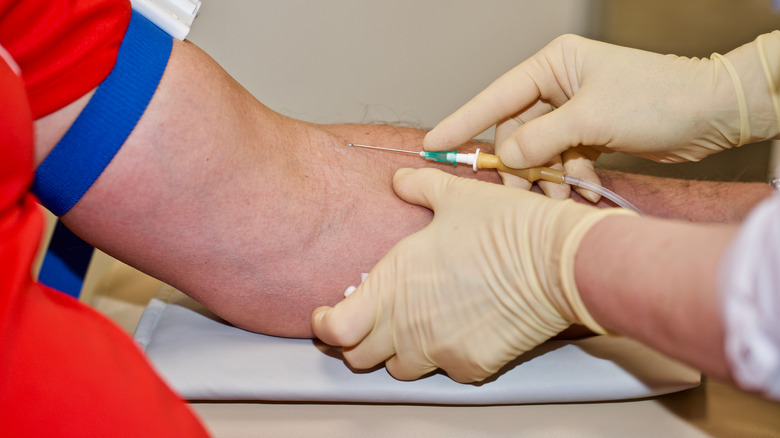This Is How Long Human Blood Vessels Really Are
The human body is a wonder to behold, and this is particularly true of what is inside of them, where the eye doesn't normally see without the aid of specialized equipment. According to Nature, there are about 30 trillion cells inside of you, and roughly half of them are not actually you, but bacteria. Similarly, according to Brain Facts, your brain makes up a fraction of your body's weight but uses approximately 20% of the body's energy.
Another surprising fact about the human body is the unimaginable extent of the circulatory system. You may only think of it when you've nicked a capillary (the smallest of the blood vessels) and have a minor, bleeding wound, or when your medical care necessitates blood being drawn, and the technician tries to find a vein to insert a needle into.
In fact, the reach of the circulatory system is difficult to fully comprehend, with thousands of miles of blood vessels being compacted into the human body.
Combined, human blood vessels would stretch for tens of thousands of miles
There are three types of blood vessels in the human body, according to the Franklin Institute. Arteries carry oxygenated blood from the heart to the rest of the body; veins bring blood back to the heart; and capillaries serve as the stage for the exchange of oxygen and carbon dioxide.
It's at the capillary level where the full extent of the human circulatory system becomes apparent. Some of these blood vessels are only five microns in diameter: by comparison, a human hair is about 17 micrometers in diameter, or just over three times the width of the smallest capillaries.
Laid end to end, according to Mental Floss, the arteries, veins, and capillaries of a human child would stretch about 60,000 miles, or about a quarter of the distance to the moon, according to NASA. In an adult, those blood vessels laid end to end would stretch to about 100,000 miles, according to the Franklin Institute.

